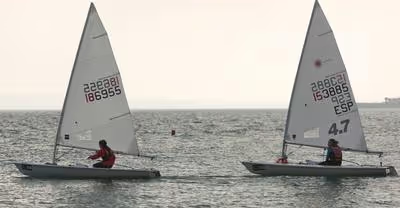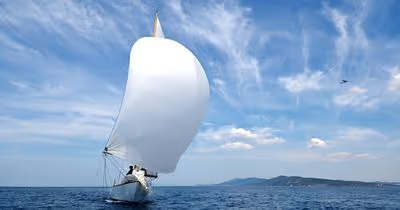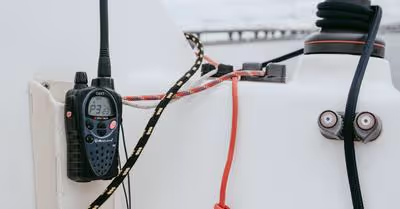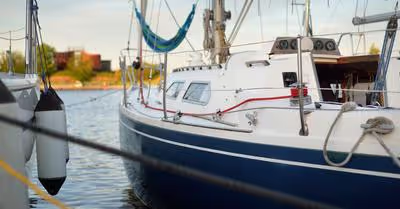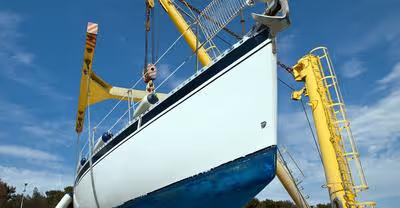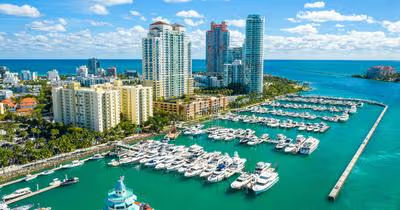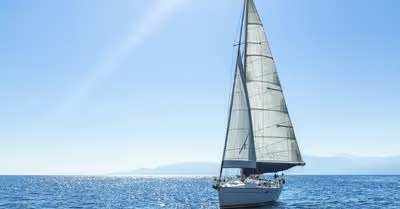Table of Contents
How Do Sailboats Work Without Wind?
As you are well aware, the wind is crucial for a sailboat. If in a rare scenario, the wind stops, you might find yourself at the mercy of the water currents, which will take you in the direction they are flowing. But there are some ways to navigate your boat in the correct direction even without wind.
As the wind slows down, you may struggle to maintain speed. But there are some techniques you can use to keep your boat moving. These techniques are challenging and fun to try. They have a lot of resemblance to what you may have learned when maneuvering a dinghy as a newbie.
Understanding Your Sailboat
Sailboats are much different than cars. You can use your car throughout your life without ever knowing the engine components. All you need to do is turn the key in the ignition, or for modern cars, depress the brake pedal and push a button, and you can be well on your way.
However, sailboats work differently. Unlike cars, you have to understand and know how your sailboat works if you wish to make the most of it. You need to ensure that you have the most wind in your sails to move your sailboat efficiently.
If there is no wind in the sails, your sailboat will not be propelled forward. You can think of it as being stuck in neutral, and any force from the environment will throw you around. In worst cases, your sailboat can even capsize.
Sailboats rely on the wind to push them and lift them up. Most sailboats are designed to move with the wind pushing along the side of the boat and a little wind pushing the boat forward. The idea is to reduce the drag and keep your boat moving in the direction you want to go.
Now, if there is no wind, here is what you can do.
Put Hydrodynamics to Use
Even in the rare case when the wind is absent from the ocean, you can rely on water forces to propel your boat. Like air, water also moves from one place to another. These movements are known as currents. These currents have more than enough power to carry your boat along.
Strong winds with weak currents work pretty well to propel your boat. Strong currents with weak winds work similarly. They can propel your boat well, not as well as wind, but they do the job.
The Tides
Even a knot of a tide can make a significant difference in your direction. The tide can give you sufficient propulsion if you are drifting in light or no wind. But how can you use tidal energy?
There are tidal maps and atlases available that predict and inform how tides will move during different times of the day. This is not to say that they are 100% accurate. But for the most part, they will give you a good idea of how the tides are moving.
If you find yourself stuck on an opposing side, the best technique is to go as close to the shoreline as possible. This is because the power of tides reduces significantly in shallow water. But if the tides are in the direction you want to go, it is best to stay in deeper water to make the most of the tides.
The Tidal Winds
As tidal streams move through the ocean, they also produce apparent winds. Imagine you have a current of ten knots. You will not feel any wind, but your vessel will drift with the tide at the speed of knots.
When your boat drifts along with the tides, you will move through the air. This will give you an impression of wind because your speed will be three knots relative to the air. You may not be able to use this “wind” for propulsion, but you can use it to set your direction and control your sailboat.
If you are lucky enough to get some light true wind, you can use it with tidal winds to enjoy good sailing. Maintaining the tide and the lee bow is essential if you attempt to get maximum control using tidal winds.
How To Sail With The Current?
When you are sailing upwind, you are going perfectly against the wind. Your objective here is to keep your boat at a 45-degree angle to the wind, as this will give you maximum propulsion if you are going against the wind.
When you are sailing with the current, you can use the tidal winds to control the direction of your boat. But controlling a boat when currents are propelling it can be tricky.
Can You Sail Against The Current?
But if your intended direction is opposite to the current, you will have difficulty navigating along. You will veer over to the sides, come to a standstill, or move further away from your target destination. Your best bet in such a case would be to wait out the quiet period until you get some wind in your sails.
A sailboat can go against the wind thanks to its keel, a flat blade that allows you to control the direction of the boat. But when there is no wind, your sails are of no use, and it is impossible to apply forces against the water currents using only the keel.
Other Methods
Although wind coming to a standstill is not common, it is best to have alternate propulsion methods on board. Here are a few of them.
Using The Propellers
If your sailboat is equipped with an engine and a propeller, you can quickly start the engines and be well on your way to your destination in no time. If you frequently sail in areas that tend to lose their wind, you can choose to have your boat equipped with a retractable propeller. Most modern propellers are designed to keep drag to a minimum, but it is best if you can remove the propeller from the water (if conveniently possible) when you are relying on sail power.
Row, Row, Row Your Boat
If your boat is not equipped with a propeller, it will be time to put your muscles to the test and resort to rowing. You may have to use different methods depending on the size of the boat, and it can be extremely strenuous and exhausting, but the exercise is good for your body.
One of the significant benefits of rowing is that it will give you some momentum, which will pay off if the wind starts blowing suddenly. The key here is to be prepared for works-case scenarios and know what you are doing.
Wait it Out
On warm and hot days, winds usually begin to blow during the afternoon and become still at dusk. This happens due to the changes in atmospheric temperatures.
As the weather turns cooler, the sea breeze will start and change direction during the late afternoon. Sea breezes are stronger near the shore, but they continue to show their effects up to ten miles on the water.
A Few Tips To Sail in Little or No Wind
Lose Some Weight
No, we are not talking about you; we are referring to the boat. If the weather prediction shows that wind will be slow, or there are chances of it stopping altogether, consider leaving behind any heavy items such as coolers or additional equipment. A lighter boat is far easier to move than a fully loaded or packed boat.
Move to The Center
When propulsion power goes low, it will be best if you move towards the center of the boat. This causes the stern to rise out of the water, reducing aerodynamic drag. You can use a tiller adjustment to control the rudder if you are captaining the boat.
Raise the Centerboard
The centerboard of your boat is essential for maintaining direction. It also helps prevent the boat from capsizing. But if there is low or no wind, you can raise the centerboard, significantly reducing the drag.
A little trial and error will determine how far you can raise the centerboard without adversely affecting your boat’s performance. You can raise the centerboard halfway or to 75% height if there is no wind. However, you must immediately drop the centerboard back down as soon as the wind starts to blow.
Adjust the Sail
When there is no wind, the sails will be slacked. Sails work in a similar way to the wings on an airplane. But instead of the lift, the wind power translates to lateral motion. If you have everyone sitting on one side of the boat, it will tilt to that side. This can cause the sail to drop down to one side.
You can use this dropping of the sail to your benefit. You can push the sail further out of the edges of the boat and have it act like an airfoil to use any slight wind that comes its way. The sails need to have a sense of orientation when in the air.
Recent Articles



